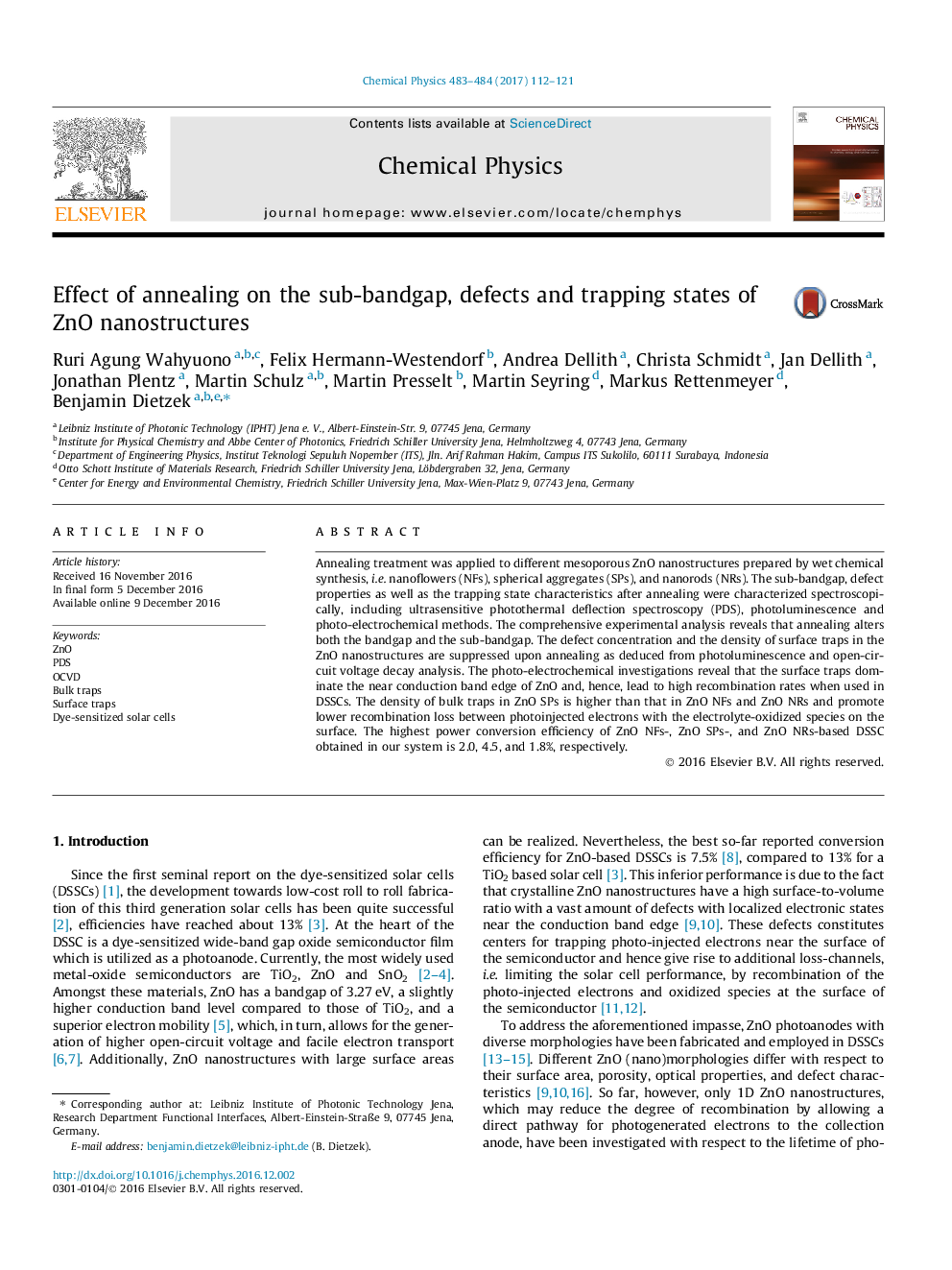| Article ID | Journal | Published Year | Pages | File Type |
|---|---|---|---|---|
| 5372712 | Chemical Physics | 2017 | 10 Pages |
â¢Annealing promotes different sub-bandgap, defect and trapping states of ZnO nanostructures.â¢Annealing reduces the bandgap and extends the band tail.â¢Annealing suppresses the defects as well as the densities of surface traps reducing recombination loss in DSSC.â¢The surface traps are more dominating the near conduction band edge of ZnO than the bulk traps.
Annealing treatment was applied to different mesoporous ZnO nanostructures prepared by wet chemical synthesis, i.e. nanoflowers (NFs), spherical aggregates (SPs), and nanorods (NRs). The sub-bandgap, defect properties as well as the trapping state characteristics after annealing were characterized spectroscopically, including ultrasensitive photothermal deflection spectroscopy (PDS), photoluminescence and photo-electrochemical methods. The comprehensive experimental analysis reveals that annealing alters both the bandgap and the sub-bandgap. The defect concentration and the density of surface traps in the ZnO nanostructures are suppressed upon annealing as deduced from photoluminescence and open-circuit voltage decay analysis. The photo-electrochemical investigations reveal that the surface traps dominate the near conduction band edge of ZnO and, hence, lead to high recombination rates when used in DSSCs. The density of bulk traps in ZnO SPs is higher than that in ZnO NFs and ZnO NRs and promote lower recombination loss between photoinjected electrons with the electrolyte-oxidized species on the surface. The highest power conversion efficiency of ZnO NFs-, ZnO SPs-, and ZnO NRs-based DSSC obtained in our system is 2.0, 4.5, and 1.8%, respectively.
Graphical abstractDownload high-res image (185KB)Download full-size image
